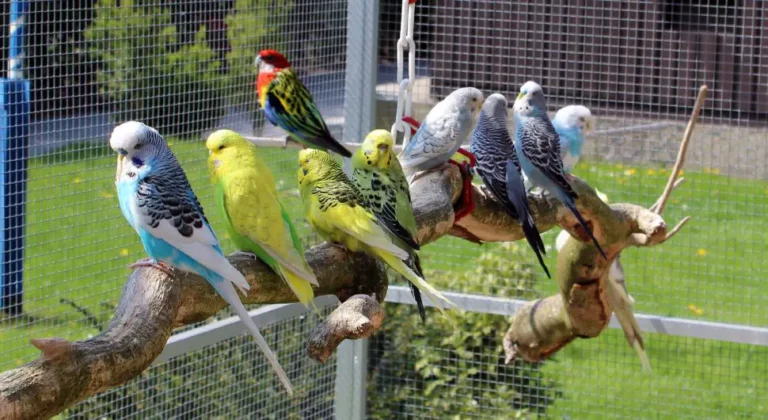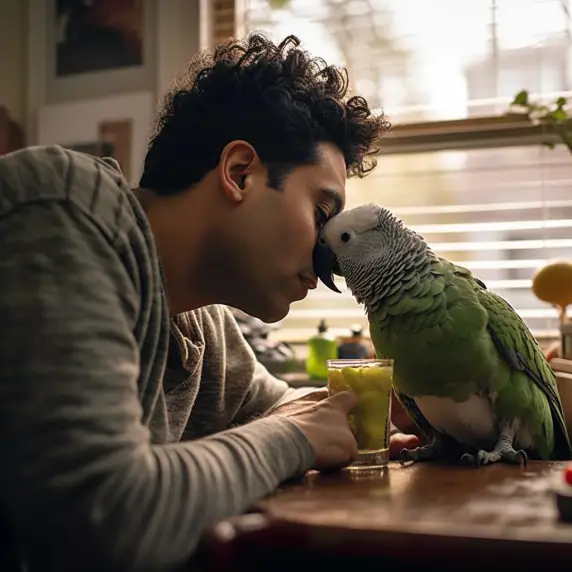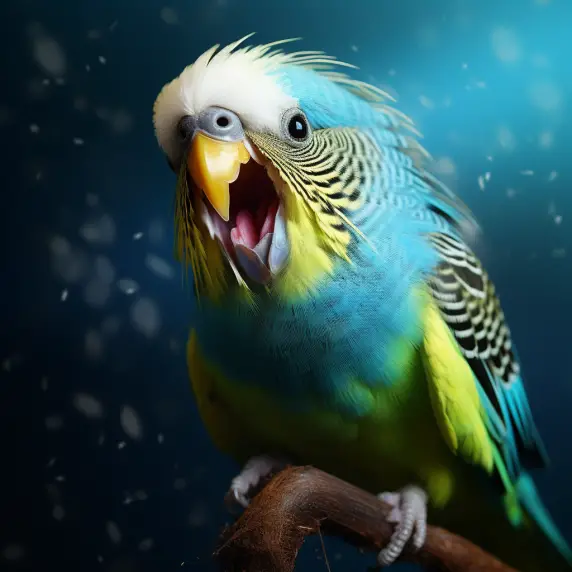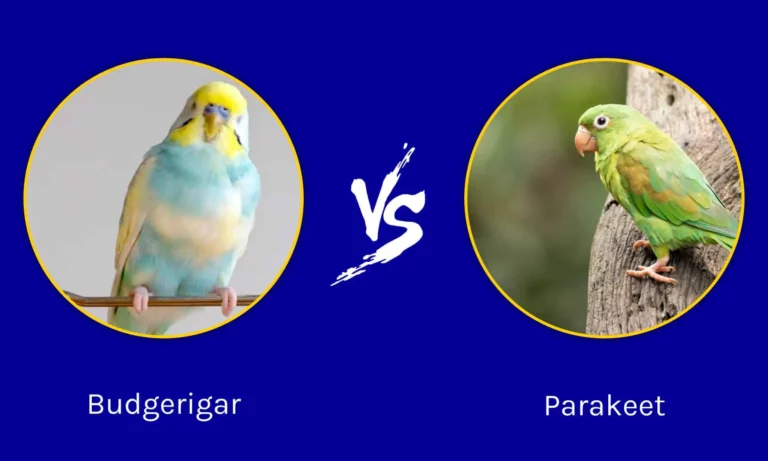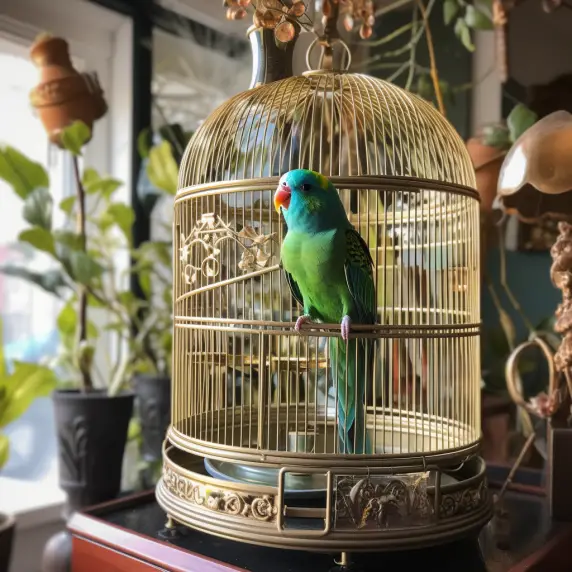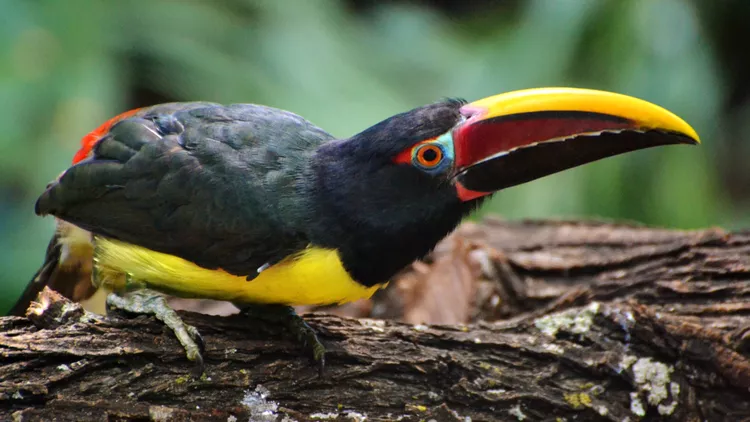Training Your Pet Bird: Tips and Techniques to Build a Strong Bond
Training your pet bird is fundamental to forging a healthy bond and ensuring their well-being. Birds need mental stimulation and social interaction, both of which can be addressed through regular training sessions.
Such training not only promotes your bird’s socialization and problem-solving skills, but also enhances your relationship, making them adaptable and better behaved. For the owner, it’s a rewarding experience that fosters trust, understanding, and improved communication for a harmonious coexistence.
Key takeaways
Training is fundamental to a healthy bond with your bird and their overall well-being.
Regular training sessions provide mental stimulation and social interaction.
Training promotes socialization, problem-solving skills, and adaptability in birds.
Well-trained birds tend to be better behaved.
Training is a rewarding experience for owners, fostering trust and improved communication.
Understanding Your Bird’s Behavior
Natural instincts and bird body language
To effectively train your pet bird, it’s essential to understand their natural instincts and how they communicate through body language. Birds have evolved specific behaviors to survive in the wild, and these instincts can influence their actions in captivity.
By observing and interpreting your bird’s body language, you can identify their needs, emotions, and potential triggers that may impact the training process.
Reading signs of stress, fear, and happiness
Knowing how to read your bird’s body language will help you gauge their emotional state during training sessions. Signs of stress and fear may include panting, feather fluffing, or crouching. On the other hand, a relaxed and happy bird may exhibit behaviors such as singing, preening, or playing with toys.
Recognizing these cues can help you adjust your training approach and ensure your bird remains comfortable and engaged.
The impact of socialization on bird behavior
Birds are social animals, and they need regular interaction with their human companions or other birds to develop healthy behaviors. Proper socialization can greatly influence a bird’s ability to learn and respond positively to training.
By spending time with your bird, talking to them, and engaging in shared activities, you can help them become more accustomed to your presence and build a strong foundation for successful training sessions.
Choosing the Right Training Environment
Selecting an appropriate training space
Creating a suitable environment for training your pet bird is crucial for success. Choose a quiet, well-lit area with minimal distractions where you can conduct training sessions. Ensure that the space is free from hazards such as open windows, mirrors, or hot surfaces that may pose a risk to your bird.
If possible, designate a specific area in your home for training to help your bird associate that space with learning.
Minimizing distractions
Distractions can make it difficult for your bird to focus during training. To minimize interruptions, turn off electronic devices such as televisions and radios, and ask family members or roommates to avoid the training area during sessions. Additionally, remove any toys or food dishes that could divert your bird’s attention.
Remember that training should be an engaging and focused activity, so minimizing distractions will help both you and your bird concentrate on the task at hand.
Maintaining a consistent training schedule
Consistency is key when training your pet bird. Establish a regular schedule for training sessions, aiming for short and frequent sessions rather than long, infrequent ones. Aim for 10 to 15-minute sessions two or three times per day, depending on your bird’s attention span and tolerance for training.
By sticking to a routine, your bird will be more likely to anticipate and look forward to these valuable learning opportunities.
Establishing Trust with Your Bird
Building a relationship through bonding
Establishing trust with your pet bird is fundamental to successful training. To build a strong bond, spend quality time with your bird outside of training sessions, engaging in activities such as talking, singing, or hand-feeding treats.
Remember to approach your bird calmly and with patience, as sudden movements or loud noises may frighten them. The more time you invest in bonding, the more comfortable and trusting your bird will become, ultimately making training sessions more productive and enjoyable.
Creating a safe environment
Providing a safe and secure environment for your bird is crucial for establishing trust. Ensure that your bird’s cage is clean, spacious, and equipped with appropriate perches, toys, and food dishes.
Allow your bird to explore and become familiar with their surroundings, both inside and outside their cage, while closely supervising them. By creating a safe space, your bird will feel more comfortable and confident during training sessions.
Positive reinforcement: Rewarding good behavior
Using positive reinforcement is an effective method for encouraging desired behaviors in your bird. This involves rewarding your bird with praise, attention, or treats when they exhibit the behavior you want to reinforce.
Be sure to reward your bird immediately after they perform the desired action, as this helps them associate the behavior with the reward. Consistently using positive reinforcement during training sessions will strengthen the bond between you and your bird while reinforcing their motivation to learn.
Training Basics: Essential Commands
The Step-Up command
Teaching your bird the “Step-Up” command is a fundamental skill that establishes trust and helps you handle your bird safely. To teach this command, gently offer your finger, a handheld perch, or your arm as a stepping platform near your bird’s feet.
Use a cue word such as “Step up” and encourage your bird to step onto the platform. As soon as they do, praise and reward them with a treat. Repeat this process regularly until your bird readily steps up on command.
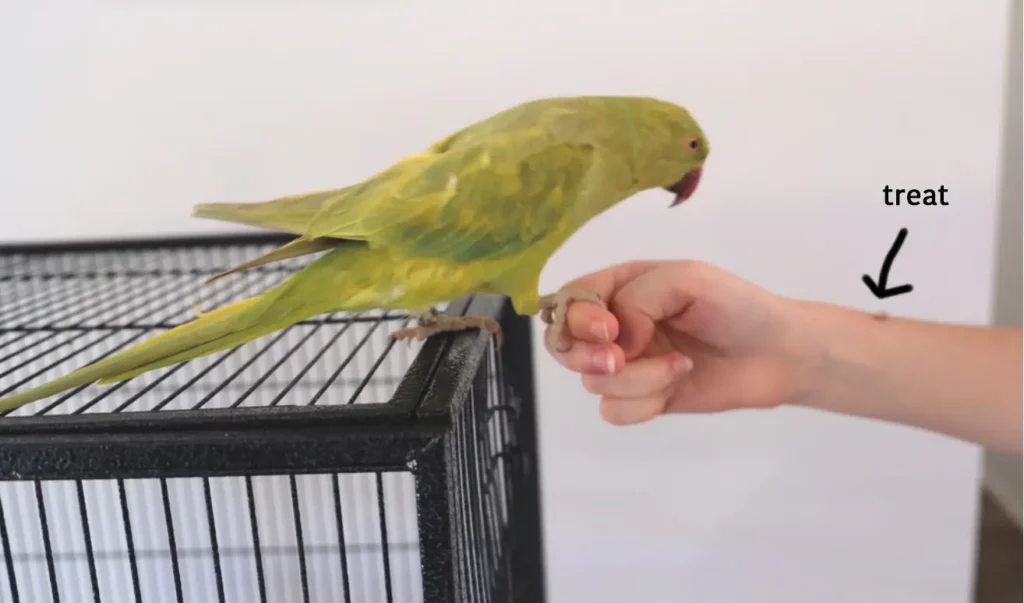
The Step-Down command
Just as important as the “Step-Up” command, the “Step-Down” command teaches your bird to return to their cage or another designated location. Hold your bird near the desired location and use a cue word like “Step down” while encouraging them to step onto the perch or cage door.
Reward and praise them when they comply. Practice this command consistently until your bird understands the cue and steps down on command.
Teaching your bird to come when called
Training your bird to come when called is a valuable skill that can help you retrieve them if they fly off or get into an unsafe situation. Begin by calling your bird’s name and offering a treat or favorite toy. Praise and reward them when they come to you.
Gradually increase the distance between you and your bird during training sessions, always rewarding their compliance. With time and practice, your bird will learn to associate their name with positive reinforcement and will come when called.
The “Stay” command
Teaching your bird the “Stay” command helps to reinforce boundaries and control during handling. Place your bird on a perch or your hand and use a cue word such as “Stay” while holding your other hand up in a “stop” gesture.
Gradually increase the duration of the “Stay” command, rewarding and praising your bird for their compliance. Consistently practicing this command will help your bird understand the concept of staying in one place when instructed.
Advanced Training Techniques
Clicker training for precision
Clicker training is a powerful technique that can help you shape your bird’s behavior with greater precision. By using a small handheld device that produces a clicking sound, you can quickly and accurately communicate with your bird when they’ve performed the desired action.
To start clicker training, “charge” the clicker by clicking it and immediately offering a treat, repeating this process until your bird associates the click with a reward. Once charged, use the clicker during training sessions to mark desired behaviors as they occur, followed by a treat.
This technique can help your bird understand and learn new commands more quickly and effectively.
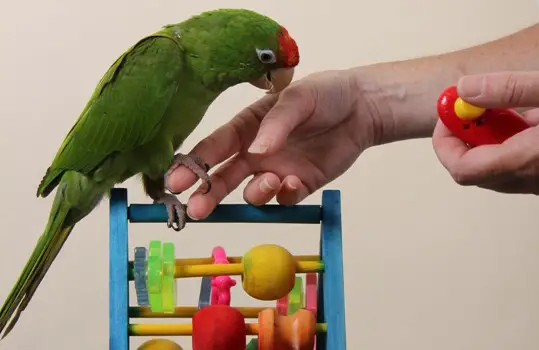
Target training to develop motor skills
Target training involves teaching your bird to touch a designated object, such as a stick or your finger, with their beak. This technique helps your bird develop motor skills and focus. Begin by holding the target close to your bird and rewarding them when they touch it.
Gradually increase the distance between the target and your bird, encouraging them to move towards the target to touch it. As your bird becomes more adept at target training, you can incorporate it into teaching more complex tricks or commands.
Trick training for mental stimulation and fun
Teaching your pet bird tricks can be a fun way to provide mental stimulation, strengthen your bond, and show off their intelligence. There is a wide variety of tricks you can teach your bird, such as waving, spinning, or playing fetch.
Start with simple tricks and gradually progress to more complex ones as your bird’s confidence and skillset grow. Remember to always use positive reinforcement and maintain a fun, engaging atmosphere during training sessions. This will help keep your bird motivated and excited to learn new tricks.
Dealing with Common Behavior Problems
Biting and aggressive behavior
Biting and aggressive behavior in birds can be challenging to manage but can often be addressed through consistent training and understanding the underlying cause. Identify potential triggers for aggression, such as fear, territoriality, or frustration, and modify your approach accordingly.
Use positive reinforcement to reward non-aggressive behavior and consider clicker or target training to redirect your bird’s focus during training sessions. If biting persists, consult with an avian specialist or experienced bird trainer for guidance.
Screaming and excessive vocalizations
While some vocalization is natural for birds, excessive screaming can be disruptive and indicative of an underlying issue, such as boredom, stress, or seeking attention. To address excessive vocalizations, ensure your bird’s environment is stimulating and offers ample opportunities for socialization, play, and mental engagement.
During training sessions, reinforce quiet behavior with praise and treats, while avoiding inadvertently rewarding loud vocalizations. If excessive screaming continues, seek advice from an avian specialist to rule out any health issues.
Destructive behaviors and how to manage them
Birds may exhibit destructive behaviors such as chewing on furniture or shredding toys as a natural way to explore their environment or relieve boredom. To manage destructive behaviors, provide your bird with appropriate outlets, such as bird-safe chew toys or foraging toys that encourage problem-solving.
Incorporate training sessions into your bird’s daily routine to stimulate their mind and prevent boredom. By offering your bird appropriate alternatives for their natural instincts, you can help minimize destructive behaviors while maintaining a positive and engaging environment.
Tips for Bird Training Success
Practicing patience and consistency
Training your pet bird requires patience, as learning new behaviors and commands can take time. It’s essential to remain patient and consistent in your approach, even when progress seems slow. Keep in mind that every bird is unique, and learning rates may vary between individuals and species.
Celebrate small milestones and always reinforce your bird’s progress with praise and rewards.
Adapting your training approach to your bird’s unique needs
Each bird has its own personality, preferences, and learning style. As a result, it’s crucial to tailor your training approach to meet your bird’s unique needs. Pay attention to their body language and response to training and adjust your techniques or rewards accordingly.
By being flexible and adapting to your bird’s individual requirements, you can create a more enjoyable and successful training experience for both you and your pet.
Continuing education and resources
Expanding your knowledge on bird training, behavior, and care can significantly enhance your training efforts and overall relationship with your pet bird. Seek out reputable resources such as books, online forums, or workshops to learn new techniques, insights, and tips.
Consider connecting with other bird owners or professionals in your area to share experiences and advice. By continuing your education and staying informed, you can better understand your bird’s needs and improve your training skills, ultimately leading to a happier, healthier pet.
Frequently Asked Questions
How long does it take to train a pet bird?
The duration of training varies depending on the individual bird, their species, and the commands or tricks being taught. Some birds may learn new behaviors within days, while others may take weeks or months.
It’s important to remain patient, consistent, and positive throughout the training process to facilitate learning and maintain a strong bond with your bird.
Can older birds still be trained?
Yes, older birds can still be trained, although it may require more time and patience compared to younger birds. As the saying goes, “you can’t teach an old dog new tricks,” but with birds, it is possible. The key is to approach training with consistency, understanding, and positive reinforcement.
It’s never too late to start building a deeper connection with your pet bird through training.
What type of treats should I use for training rewards?
The best treats for training rewards are small, healthy, and highly desirable for your bird. Popular options include small pieces of fresh fruit or vegetables, nuts, and bird-safe seeds. Make sure to offer treats in moderation and choose options that are appropriate for your bird’s species and dietary requirements.
Providing a variety of treats can also help keep your bird motivated and engaged during training sessions.
How can I prevent my bird from becoming bored during training?
To keep your bird engaged and prevent boredom during training, ensure that sessions are fun, interactive, and appropriately challenging. Vary the commands or tricks being taught, introduce new elements, or change the order of exercises to keep things fresh and interesting.
Additionally, keep training sessions short and frequent, as birds have limited attention spans and may lose interest in prolonged sessions.
How can I tell if my bird is stressed or uncomfortable during training?
Pay close attention to your bird’s body language and behavior to identify signs of stress or discomfort. Signs may include panting, feather fluffing, crouching, or attempts to escape. If your bird appears stressed, pause the training session and give them time to relax before attempting to resume.
Adjust your approach as needed to create a more comfortable and positive experience for your bird. Remember, successful training relies on mutual trust and understanding between you and your pet bird.
Final Thought
Training your pet bird can be a rewarding and enjoyable experience that offers numerous benefits for both you and your feathered friend.
By understanding your bird’s behavior, providing a suitable training environment, and using positive reinforcement, you can build a strong bond and help your bird learn essential skills and commands. Always remember to be patient, consistent, and adaptive to your bird’s unique needs, celebrating progress along the way.
As you continue to learn and grow together, you’ll discover the incredible joy and satisfaction that comes from sharing a deep, meaningful connection with your pet bird.

